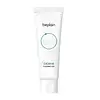What's inside
What's inside
 Key Ingredients
Key Ingredients

 Benefits
Benefits

 Ingredients Side-by-side
Ingredients Side-by-side

Water
Skin ConditioningPropanediol
Solvent1,2-Hexanediol
Skin ConditioningCentella Asiatica Extract
CleansingTromethamine
BufferingAcrylates/C10-30 Alkyl Acrylate Crosspolymer
Emulsion StabilisingGlycerin
HumectantCarbomer
Emulsion StabilisingHydroxyacetophenone
AntioxidantButylene Glycol
HumectantEthylhexylglycerin
Skin ConditioningDisodium EDTA
Hydrogenated Lecithin
EmulsifyingFicus Carica Fruit Extract
HumectantUlmus Davidiana Root Extract
Skin ConditioningSecale Cereale Seed Extract
AbrasiveCeramide NP
Skin ConditioningTocopherol
AntioxidantWater, Propanediol, 1,2-Hexanediol, Centella Asiatica Extract, Tromethamine, Acrylates/C10-30 Alkyl Acrylate Crosspolymer, Glycerin, Carbomer, Hydroxyacetophenone, Butylene Glycol, Ethylhexylglycerin, Disodium EDTA, Hydrogenated Lecithin, Ficus Carica Fruit Extract, Ulmus Davidiana Root Extract, Secale Cereale Seed Extract, Ceramide NP, Tocopherol
Houttuynia Cordata Extract
Skin ConditioningGlycerin
HumectantPanthenol
Skin ConditioningMadecassoside
AntioxidantMadecassic Acid
Skin ConditioningAsiaticoside
AntioxidantAsiatic Acid
Skin ConditioningSh-Oligopeptide-1
Skin ConditioningRh-Polypeptide-1
Skin ConditioningSh-Oligopeptide-2
Skin ConditioningBeta-Glucan
Skin ConditioningSodium Hyaluronate
HumectantCarbomer
Emulsion StabilisingArginine
MaskingAllantoin
Skin ConditioningXanthan Gum
EmulsifyingDipotassium Glycyrrhizate
HumectantLecithin
EmollientButylene Glycol
Humectant1,2-Hexanediol
Skin ConditioningHouttuynia Cordata Extract, Glycerin, Panthenol, Madecassoside, Madecassic Acid, Asiaticoside, Asiatic Acid, Sh-Oligopeptide-1, Rh-Polypeptide-1, Sh-Oligopeptide-2, Beta-Glucan, Sodium Hyaluronate, Carbomer, Arginine, Allantoin, Xanthan Gum, Dipotassium Glycyrrhizate, Lecithin, Butylene Glycol, 1,2-Hexanediol
 Reviews
Reviews

Ingredients Explained
These ingredients are found in both products.
Ingredients higher up in an ingredient list are typically present in a larger amount.
1,2-Hexanediol is a synthetic liquid and another multi-functional powerhouse.
It is a:
- Humectant, drawing moisture into the skin
- Emollient, helping to soften skin
- Solvent, dispersing and stabilizing formulas
- Preservative booster, enhancing the antimicrobial activity of other preservatives
Butylene Glycol (or BG) is used within cosmetic products for a few different reasons:
Overall, Butylene Glycol is a safe and well-rounded ingredient that works well with other ingredients.
Though this ingredient works well with most skin types, some people with sensitive skin may experience a reaction such as allergic rashes, closed comedones, or itchiness.
Learn more about Butylene GlycolCarbomer is a polymer of acrylic acid. Its main role is to create a gel consistency.
A high amount of carbomer can cause pilling or balling up of products. Don't worry, most products contain 1% or less of carbomer.
Glycerin is already naturally found in your skin. It helps moisturize and protect your skin.
A study from 2016 found glycerin to be more effective as a humectant than AHAs and hyaluronic acid.
As a humectant, it helps the skin stay hydrated by pulling moisture to your skin. The low molecular weight of glycerin allows it to pull moisture into the deeper layers of your skin.
Hydrated skin improves your skin barrier; Your skin barrier helps protect against irritants and bacteria.
Glycerin has also been found to have antimicrobial and antiviral properties. Due to these properties, glycerin is often used in wound and burn treatments.
In cosmetics, glycerin is usually derived from plants such as soybean or palm. However, it can also be sourced from animals, such as tallow or animal fat.
This ingredient is organic, colorless, odorless, and non-toxic.
Glycerin is the name for this ingredient in American English. British English uses Glycerol/Glycerine.
Learn more about Glycerin